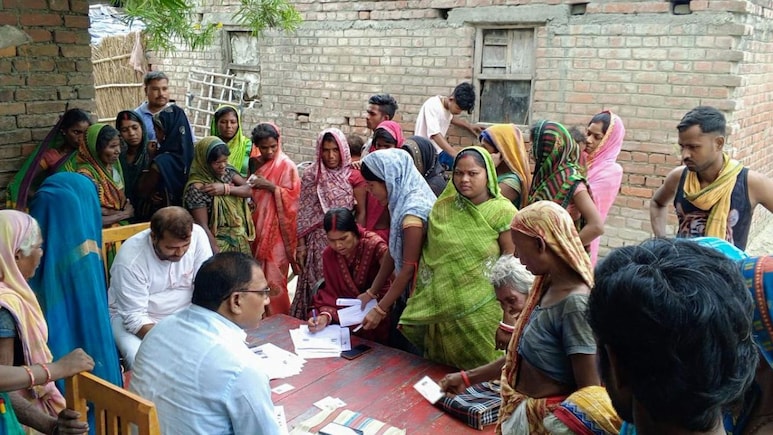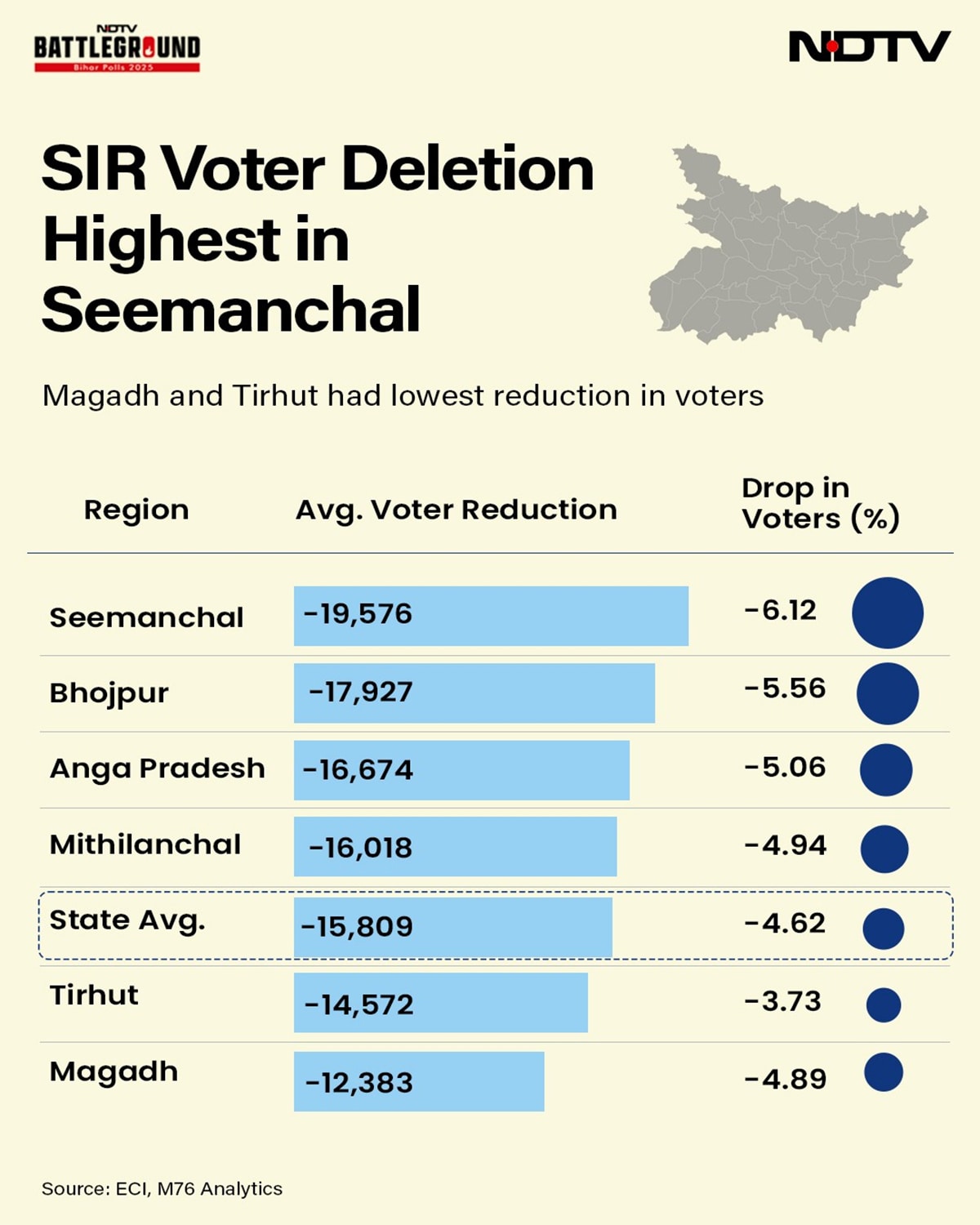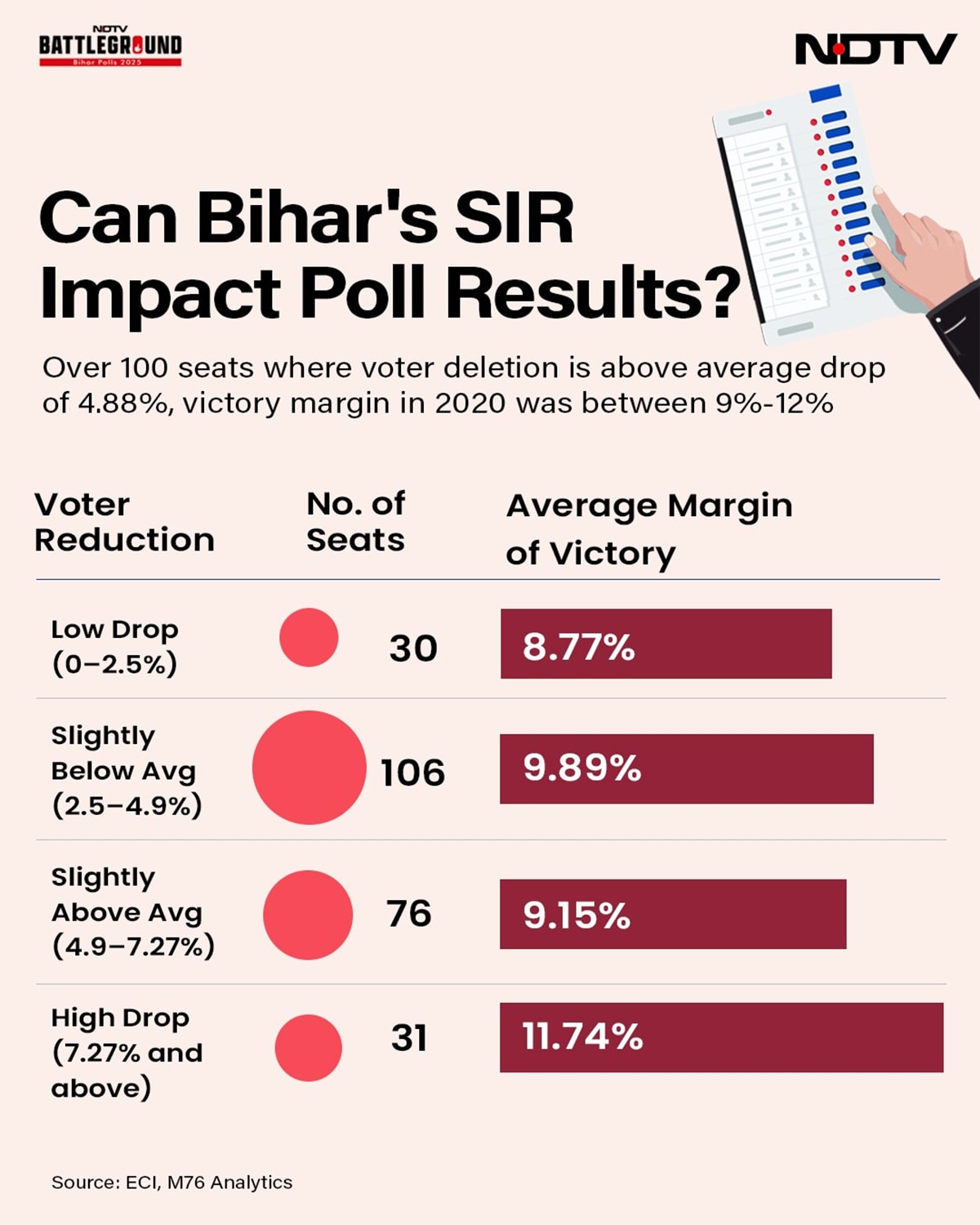
A detailed constituency-wise analysis of Bihar's Special Intensive Revision (SIR) data, as of September 30, 2025, shows a statewide average drop of 4.88 per cent in the number of registered voters compared to the rolls published on January 1, 2025. This earlier roll is used as the benchmark because detailed data for each constituency is available on the Election Commission's portal in Form 2B.
To make this comparison possible, the team at M76 Analytics used Artificial Intelligence tools and algorithms to extract data from nearly 90,000 scanned documents of voter blocks across 243 Assembly constituencies. This massive effort allowed for a like-for-like comparison of voter numbers at the constituency level.
How Much Have Voter Numbers Dropped?
On average, each Assembly seat has 15,809 fewer voters than in January. But the drop isn't uniform across the state. The highest drop is in Seemanchal, followed by Bhojpur. Magadh has seen the least reduction in voter numbers.
The below graphic shows regional variations.

What Does This Mean for Political Parties?
To understand the potential impact, we looked at how different regions voted in the 2020 Assembly elections.
Vote Share by Region (2020)
- Seemanchal: RJD+ and NDA were neck and neck, but AIMIM took 11 per cent of the vote. If AIMIM hadn't contested, RJD+ could have had a clear lead. In terms of seats, however, the BJP already had 12/24 or 50 per cent seats there. Four of the five sitting MLAs of the AIMIM have already moved over to the RJD, so the guess is still open if there would be a substantial deviation one way or the other in terms of impact of the SIR exercise.
- Bhojpur: Bhojpur has the second highest reduction of voters as per the SIR revision, which is 5.56 per cent of votes. RJD+ had a strong lead of 7 percentage points over NDA. So, the impact of SIR would be tested in this region.
- Anga Pradesh, Mithilanchal, Tirhut: NDA had a clear edge in these regions.
- Magadh: A stronghold of RJD+, and also the region with the least voter reduction.
Is The Voter Drop Targeted?
The data shows that voter reduction is spread across regions, including strongholds of both NDA and RJD+. This suggests that the SIR exercise hasn't disproportionately affected any one alliance.
Can SIR Influence Election Outcomes?
To assess this, constituencies were grouped based on how much their voter rolls shrank, using statistical bands around the average drop of 4.88 per cent.

The average margin of victory in 2020 was 9.7 per cent.
- Most seats fall in the first two categories, where margins are close to the average.
- However, 107 seats (the last two categories) could see post-election analysis attributing changes in winners to the SIR exercise.
- Of particular interest is the last bucket of 31 seats where where the average margin of victory is 11.74 per cent and the voter reduction is also above 7.27 per cent. These could be the category of seats where even strongholds of some parties could be impacted.
Takeaway
The SIR revision has led to a significant drop in voter numbers across Bihar, with Seemanchal and Bhojpur seeing the biggest reductions. While the impact is spread across party strongholds, the real effect on election outcomes will only be clear after the results. For now, the data suggests that over 100 seats could be influenced by these changes.
Follow the Author on X @JMAI799249
Track Latest News Live on NDTV.com and get news updates from India and around the world

